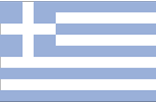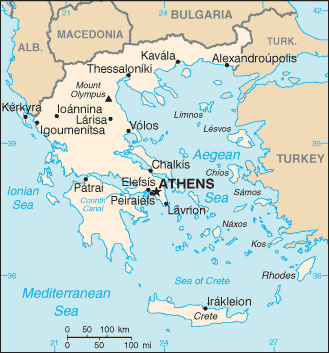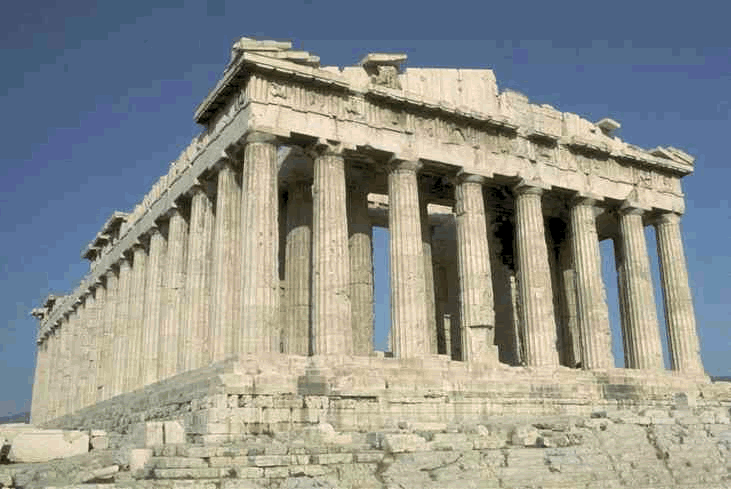 |
 |
THE PARTHENON - GREECE
 |
 |
| Location: | Geographic coordinates: | Area: | Area - comparative: |
| Southern Europe, bordering the Aegean Sea, Ionian Sea, and the Mediterranean Sea, between Albania and Turkey. | 39 00 N, 22 00 E | total: 131,940 sq km | Slightly smaller than Alabama |
| Population: | Languages: | Capital: | Currency: |
| 10,647,529 | Greek 99% (official), English, French | Athens | euro (EUR) |



| Types of rocks used on the monument: | Marble (Metamorphic rock) |
Started in 447, the Parthenon was masterminded by Pericles who took personal responsibility for the whole project. It featured numerous architectural innovations, and sat on a base 70 meters long and 26 meters wide. Constructed in the 'Doric' style it had 17 columns along its length and eight columns along its width, each of which was over 10 meters high and 2 meters in diameter. Right-angled buildings tend to create an optical illusion that can make them look top heavy. To compensate for this effect, the Parthenon's columns utilise an architectural effect called entasis, and get gradually thinner from the middle up.
The magnificent figures carved into the space between the top of the columns and the rooftop are some of the finest ever example of ancient sculpture. Lord Elgin, a British diplomat, removed many of these from the ruins in 1801. Shipped back to Britain, they are now housed in the British Museum, whose ownership of them has been disputed ever since. Other striking parts of the temples that have survived include the Parthenon Frieze.
Only two and a half inches thick at its maximum depth it depicts a procession of 360 noble Athenians, as well as numerous animals and gods. A pinnacle of art, barely visible in its original position, the Parthenon Frieze stood 1 meter tall and would have encircled almost the whole building's upper walls, making its total length 160 metres.
© Guillermo Rocha, P. G. / Brooklyn College Geology Department